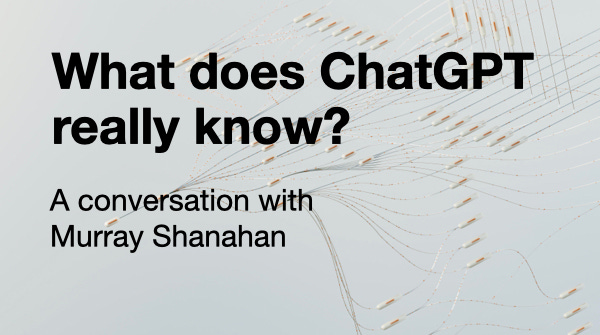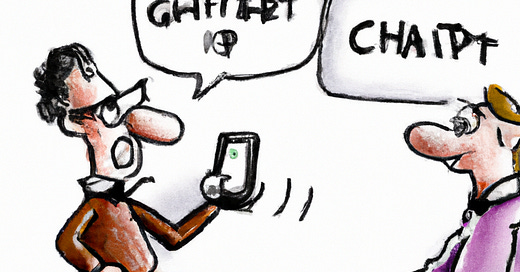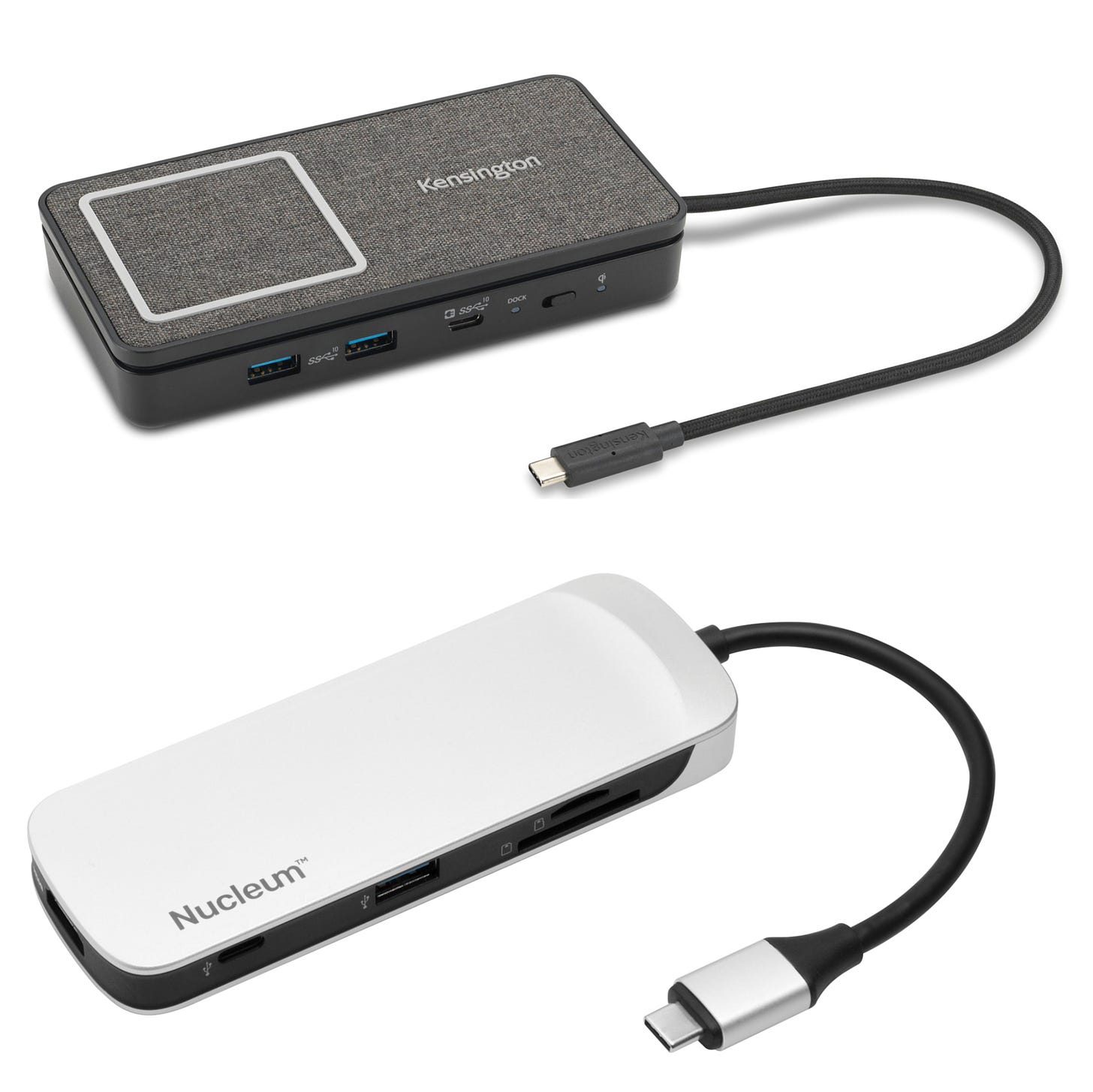This is AI drawing a cartoon about AI. I asked the Dall-E image tool to draw “caricature about ChatGPT.” Sree’s newsletter is produced with non-AI Zach Peterson (@zachprague), with a tech tip from non-AI Robert S. Anthony (@newyorkbob). Many thanks to our sponsor, Armory Square Ventures.
🗞 @Sree’s Sunday #NYTReadalong: This week’s guest was Rose Horowitz, founder of the #WomenToFollow Summit; inaugural edition is Feb. 28! You’ll find the recording, along with two years’ worth of archives at this link. The Readalong is sponsored by Muck Rack. Interested in sponsorship us? Email sree@digimentors.group and neil@digimentors.group.
🎯 Our company, Digimentors, works to increase the digital footprint and impact of companies and nonprofits around the world. We do this via digital and social consulting, as well as virtual and hybrid events production. See our updated brochure. Get in touch (no project too big or too small): sree@digimentors.group and neil@digimentors.group. If you’d rather chat, here’s my Calendly.
***
ARTIFICIAL INTELLIGENCE IS HERE and we owe it to ourselves to be smart about it. This begins in the classroom.
Generative AI — software that can “create” something original — is truly a disruptive technology. That word, “disrupt,” gets thrown around a lot in the tech world (often quite wrongly), but there’s no denying that ChatGPT is a game-changer. Generative AI will become a staple of every marketing team in need of two dozen ad variants and landing pages for their latest campaign. It will change the way software teams work. It will very likely change the way we interact with the internet.
It will also cause a seismic shift in the way our current education system works — from top to bottom. The only way forward is to understand it, assess it and cautiously embrace it, as Kevin Roose explains:
There are legitimate questions about the ethics of A.I.-generated writing, and concerns about whether the answers ChatGPT gives are accurate. (Often, they’re not.) And I’m sympathetic to teachers who feel that they have enough to worry about, without adding A.I.-generated homework to the mix.
But after talking with dozens of educators over the past few weeks, I’ve come around to the view that banning ChatGPT from the classroom is the wrong move.
Instead, I believe schools should thoughtfully embrace ChatGPT as a teaching aid — one that could unlock student creativity, offer personalized tutoring, and better prepare students to work alongside A.I. systems as adults.
It’s silly to dismiss ChatGPT, and other AI-powered chatbots, and image diffusion engines, as just glorified auto-fill tools. Despite some early stumbles, and at least one awful lapse in judgement, it’s already clear that this technology has, right now, countless practical use cases in the real world.
Almost overnight, the futures of today’s middle- and high-school students changed dramatically. Industrial automation and mechanization have been transforming manual labor since the cotton gin, but it’s never been more important for people to understand the machines they are working with and maintaining. We need to teach people, quickly, how to communicate effectively with these machines.
For The Atlantic, Charlie Warzel wrote an excellent piece on the topic. An excerpt:
Good prompts aren’t just specific. They seem to reflect a deeper understanding of the model you are trying to manipulate. One way to think of prompt trial and error is as an attempt to glean what information the model is pulling from and how the AI organizes and indexes the information at its disposal. It’s informed guesswork.
Schools and universities are trying to keep up and adjust. This is a very hard thing to do at institutions with hundreds or thousands of professors, adjuncts, funded chairs and more. At the middle and high school levels, adjusting on the fly is simply not a realistic thing to expect. It’s new, it’s hard to grasp, and a national teacher shortage isn’t helping.
Yes, teachers are overwhelmed, but those who take it seriously and try to figure it out — and not just blindly fight it — will be doing their students, their schools and their own careers a favor.


This is just the beginning of what will be a series of paradigm-shifting technologies. So much of our day-to-day lives is essentially managed by a series of computers communicating — the commute, getting lunch, being online, paying bills, etc — these are things that now require little to no human-to-human interaction. ChatGPT and other generative AI technologies present an almost infinite amount of automations in terms of data transformation and analysis — think financial institutions (both public and private), logistics, aerospace — the list is endless, and the potential applications are really mind-boggling. They aren’t perfect by any means, but, they can already do a lot and I think they will only get better.
I highly recommend getting at least a free account for OpenAI’s two products, ChatGPT and DALL-E. Really consider what you ask it to do, and be specific with what you want it to produce. Experiment, mix it up, learn as you go. It’s fascinating, and it’s impossible to not see what something like this looks like in two years, let alone five or ten. Meanwhile, Ajay Singh says these seven tools are better than ChatGPT.
ChatGPT and similar tools do not really “understand” things so much as they are able to contextualize and predict answers, and they are only getting better at this sort of thing. This episode of Many Minds with Murray Shanahan, a professor at Imperial College London and Research Scientist at DeepMind, is technical, but also very accessible.


That “yet” is a lot closer than a lot of people want to consider. My advice to educators at all levels is this: Get to know and understand AI and its many applications. Let your students use it — and use it with them.
The more they understand about AI right now, the better off we all will be in the future.
I asked ChatGPT to write me a conclusion to this piece. I have to say… not a terrible experience:
- Sree
Thank you for the incredible response to the essay that Zach and I wrote about losing our mothers at 18 and 52 respectively. Your comments, notes and stories showed us that you we not alone. 🙏
A Message from Armory Square Ventures
Journalist and ASV Platform Advisor Elizabeth MacBride is reporting a series we sponsor called Deep Dives into Secondary Cities. She has penned a new deep dive, this time in the city of Indianapolis, where our firm recently made an investment and has an office.
"I left Indianapolis feeling that, with a little bit of outside capital, it’s capable of generating a lot of its own economic energy, like the internal combustion engines still produced there." -Elizabeth
Read more about Indianapolis, its culture and its burgeoning tech community on the Forbes website at: https://bit.ly/3IprHgU
DIGIMENTORS TECH TIP: Laptop Feeling Lonely? Give it a Hub
By Robert S. Anthony
Each week, veteran tech journalist Bob Anthony shares a tech tip you don’t want to miss. Follow him @newyorkbob.
Years ago, the sign of a quality laptop was the number of ports it had on its back and sides. Remember those fat parallel printer cables and thick serial cables? Too young? You’re lucky. They weren’t fun to deal with.
Thanks to wireless technologies like Wi-Fi and Bluetooth, the necessity for multiple hardware ports has shrunk, but hasn’t disappeared. What if you need to connect your slim laptop to a projector or monitor for a presentation? That HDMI cable hanging from the monitor isn’t going to connect itself.
Fortunately, there are many hubs and docks available that can expand the Thunderbolt or USB-C ports on today’s slim laptops into multiple ports for data, video and power.
The Kensington SD1700P USB-C Dual 4K Portable Dock with Qi Charging connects to Thunderbolt or USB-C ports with a single permanently connected cable. The cloth-covered unit has two HDMI ports, both of which support up to 4K video at 60Hz, and two “SuperSpeed” USB-A 3.2 Gen2 ports for older USB devices like external hard drives, wired keyboard and mice, flash drives and memory card readers.
The Kensington unit’s single SuperSpeed USB-C 3.2 Gen 2 port provides not only fast data transfers, but also up to 100 watts of power delivery for other connected devices as long as an adequate power adapter is connected.
The unit also has an Ethernet port which supports data speeds up to one gigabyte per second, an essential, but often overlooked connection. A wired Ethernet connection is useful for video conferencing platforms like Zoom, where a flaky wireless link can degrade audio and video. Wired Internet connections are often faster and more reliable than Wi-Fi wireless connections from the same router.
Last, but not least is the wireless charging pad on top of the Kensington unit, which can charge smartphones and smartwatches which support the Qi wireless charging standard, which covers most major mobile device brands including Samsung and Apple.
An older, smaller and more travel-friendly hub option is the slim Nucleum USB-C Hub from Kingston Technology, which offers connectivity useful for photo and video enthusiasts. The unit includes both SD Card and microSD Card slots, making it easy to transfer photos and videos from cameras and smartphones into a laptop.
Also built in are two USB-A 3.1 Gen 1 ports and two USB-C 3.1 Gen 1 ports, one of which can be used for up to 60 watts of power delivery. A single HDMI port at the end of the Nucleum supports up to 4K video.
Note that while all Thunderbolt ports can handle video and data, USB-C ports need to support the newest data standards, which includes so-call “Alt Mode,” in order to handle video signals. So read those specs carefully before you hub your laptop.
❓Did we miss anything? Make a mistake? Do you have an idea for anything we’re up to? Let’s collaborate! sree@sree.net and please connect w/ me: Twitter | Instagram | LinkedIn | YouTube / Cameo.








